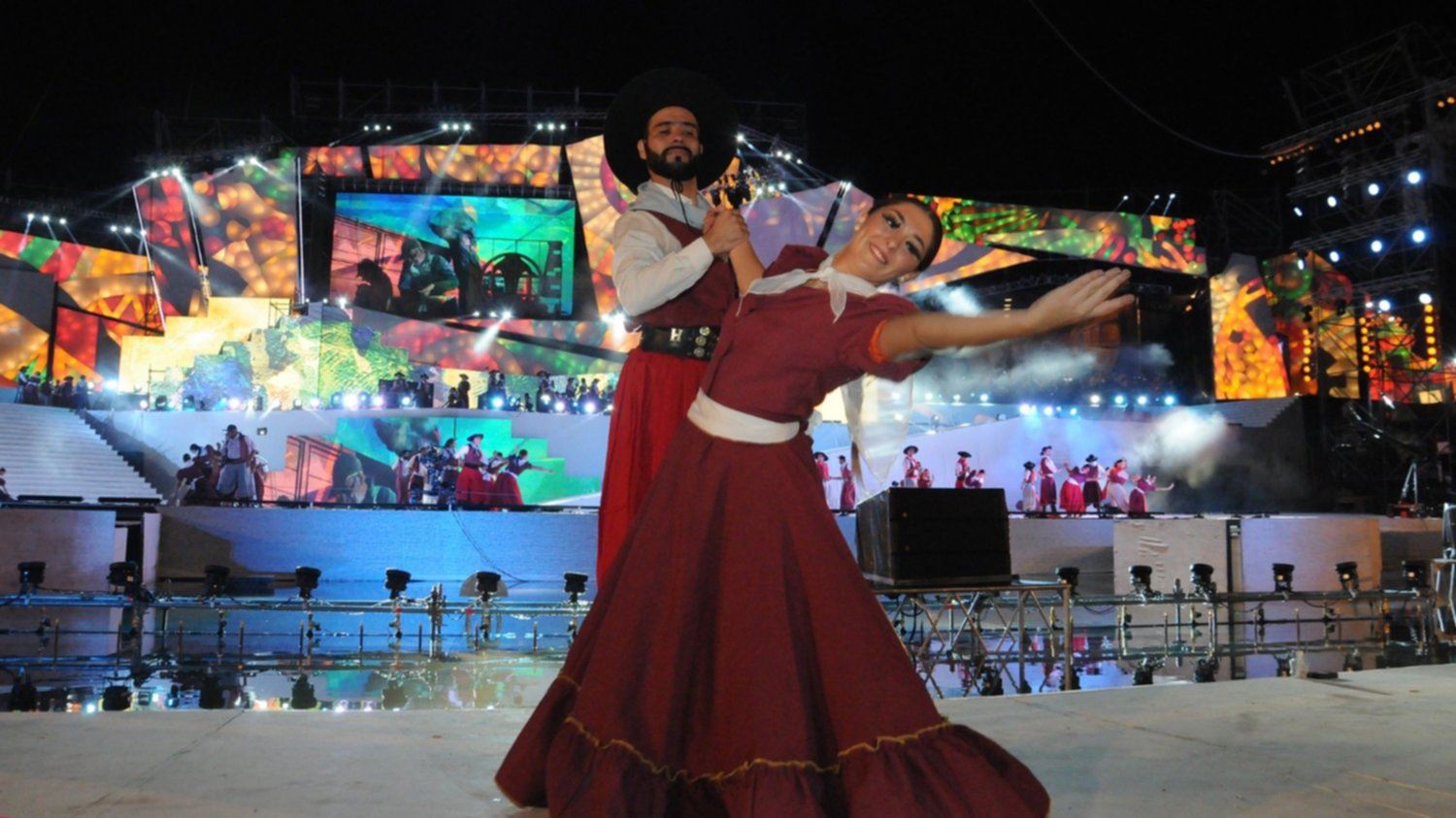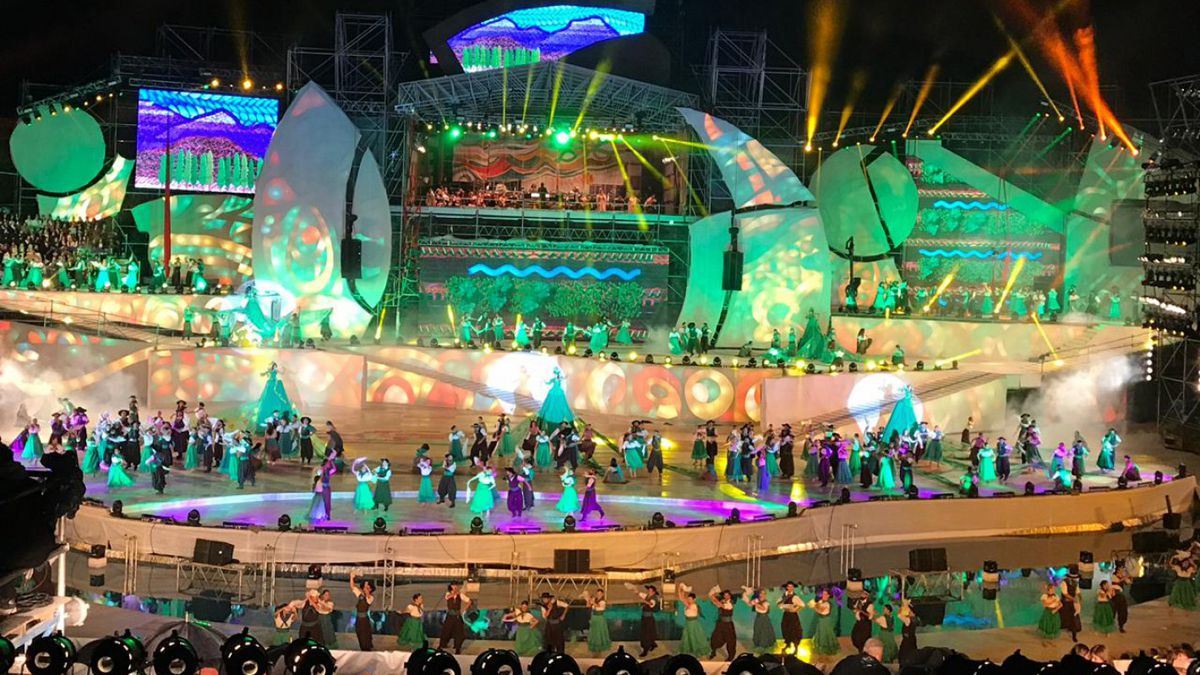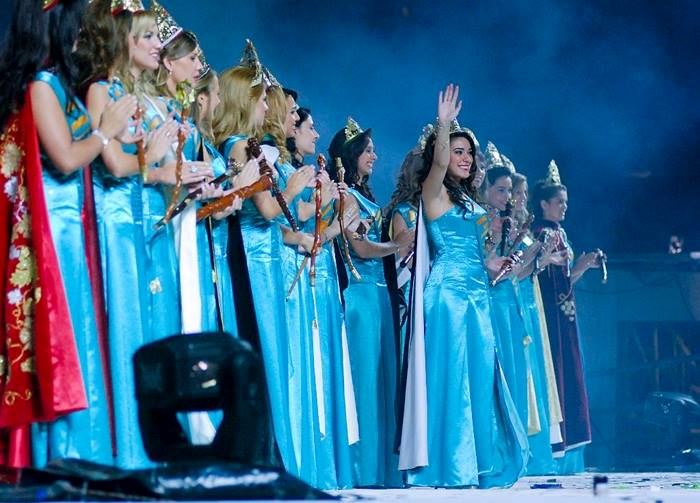The Fiesta Nacional de la Vendimia is a traditional and popular event originating in Mendoza, reflects the celebration of the grape transformed into wine through the effort that the vine growers carry out in the vineyards each year.
The Party has its origin at the time of the great immigration, when at the end of the vine harvest and winemaking work, the bounties of nature were appreciated with dances and songs. Furthermore, the prettiest of women was chosen to be crowned with bunches of grapes.
This popular celebration was the inspiring source since 1936 of the festival as we know it today and that every year is relived in the month of March and it became the most important cultural and tourist event in Mendoza.
The National Harvest Festival consists of four central events: the Blessing of the Fruits, the White Road of the Queens, the Carousel and the Central Act, with the latter being the most representative and attractive nationally and internationally, held in the Greek theater Frank Romero Day (Parque San Martín, Gutiérrez 5500) that is redesigned in its structure year after year and in which more than a thousand dancers participate on its stage, as well as local actors, combining artistic, light and sound shows.

The first event of the Festival is The Blessing of the Fruits, it is a act solemn religious whose objective is to thank God for the healthy fruits obtained from the harvest. It is carried out by a local provincial archbishop together with the image of the Virgen de la Carrodilla, considered Patroness of the Vineyards.
For his part, the Governor of the Province of Mendoza complies with an ancient ritual, the "Strike at the Plow Shaft", which formerly represented the call to rest of the worker.
The second event that makes up the National Harvest Festival is La Vía Blanca. A parade of lighted allegorical chariots transporting both outgoing and aspiring queens to the national scepter.
During the tour the queens and their court, greet and present products (wines, fruits and sweets) to the spectators who come together to accompany and encourage them. They also circulate around the floats, carts drawn by oxen or horses that show the gaucho groups with their typical clothes that recall the first existing vehicle in Mendoza with more than one hundred and twenty years old made of wood and leather.

Another of the classic moments in the Vía Blanca de las Reinas is the Pisada de la Uva, where the 18 departmental candidates perform the ritual of the symbolic tread to produce patero wine.
The last event and the most popular is the Central Act folk dances with more than a thousand dancers on stage, artistic representations, plays of light and sound are performed. They perform from 700 to 1,000 artists, including dancers, actors and more than 4,200 pieces of costumes.
Throughout the night you can see Mendoza dances, giant grapes, exotic costumes and traditional, various acts related to the grape harvest, the process in the winery, tourism, immigration and everything related to the grape.
Another interesting point is that around the stage there are stands, samples and wine tastings from the different Mendoza wineries, where you will be able to enjoy Tar of the varieties of grapes and the famous Mendoza Malbec! These drinks can be combined with the different regional food stalls, where Mendoza goats, savory olives, empanadas, alcayotas and Mendoza pancakes are offered.

During the Central Act, the public awaits the most awaited moment: the election and coronation of the national harvest queen. The staging is organized through a script that is different year after year in terms of its theme, generally representing the past and present in Mendoza around the work of the people and the obtaining of wine as a product of their efforts. .
At the culmination, that is, after the coronation of the new national sovereign, people are fired with fireworks that are launched from Cerro de la Gloria for 20 minutes.
The National Harvest Festival is celebrated on the first Saturday in March and lasts for 4 hours. The show is attended by about 20,000 people comfortably seated in the l Frank Romero Day, plus some 50,000 people who gather in the hills that surround the area.
The National Geographic named the National Harvest Festival as the second most important harvest festival in the world. In addition, it is considered one of the five most important and popular festivities for its parades that exist.
The LGTB Vintage
The LGTB Harvest has been part of the calendar for several years the provincial and national agenda as one of the central shows within the e harvest festivities representing the LGTB collective.
Since 2003, the Government de Mendoza made the Harvest for All official declaring it of Tourist and Cultural Interest, and in 2013 the Ministry of Tourism of the Nation declared the Harvest for All LGTB of National Tourist Interest.
This event takes place the Saturday following the Main Act (Second weekend of March) at the Arena Maipú Stadium (791 Emilio Civit, Maipú).
It is a show without limits, extravagant and of extreme sensuality with a surprising technique, multiple stages, special effects, artists, singers, DJs and the election of the new LGBT National Kings.
In addition, dance shows, jugglers, floats and light shows are added. It is ideal to spend a fun night of pure dancing. A whole theme is also developed around wine, its cultivation and the different stages its producers go through.
Where to buy tickets for the National Holiday Vintage
To be part of this great national event, you can purchase tickets via the official website de Vendimia Mendoza and follow the steps to buy tickets for the Central Act or the LGTB Harvest.
Only up to 4 tickets are allowed per user, with identity document or passport and card number.
Also can be purchased at the window at the Theater Independencia (Chile 1184) or at the Mendoza Hippodrome (Montes de Oca 1055).
Tickets vary in price depending on location. The ones with the highest value are those of the Malbec and Tempranillo sectors, since they are the closest to the stage. Then they follow: Cabernet and Bonarda, with Chardonnay being the cheapest. While the Torrontés sector is only for people with disabilities.
Another point of sale of tickets for those found in Buenos Aires is the Casa de Mendoza (Av. Callao 445).
If you want to book accommodations in Mendoza, tours or travel packages, contact us!